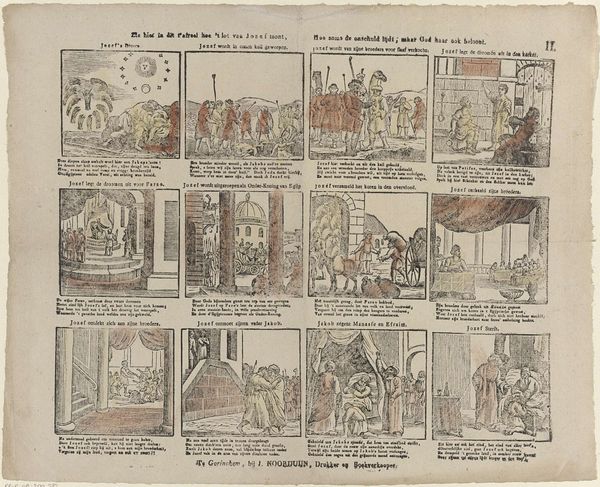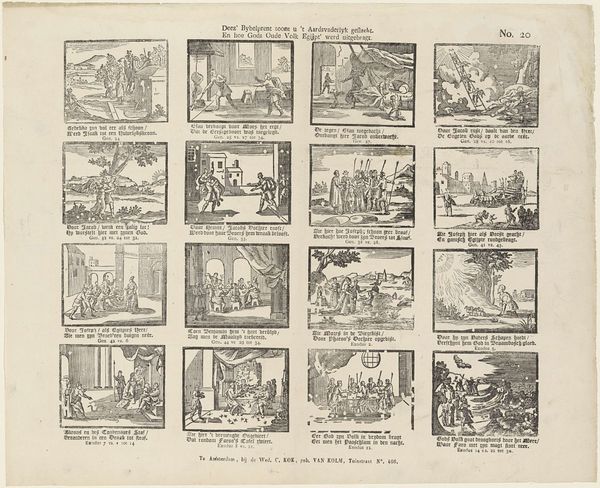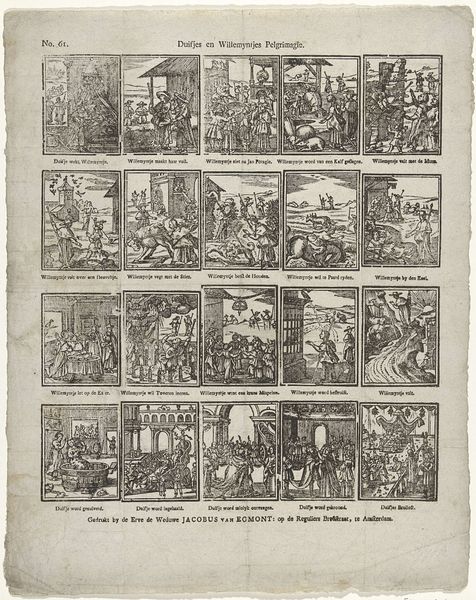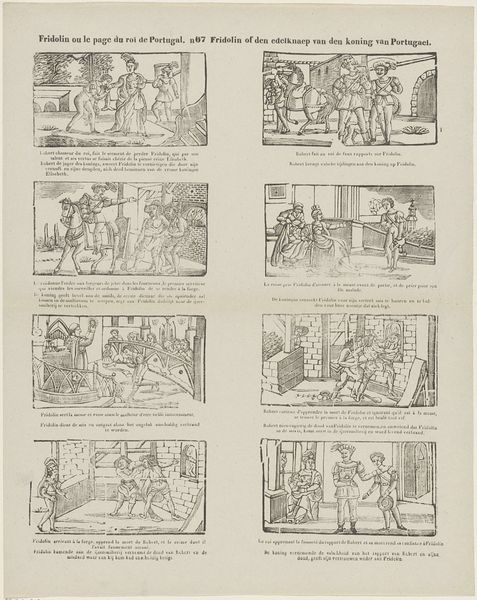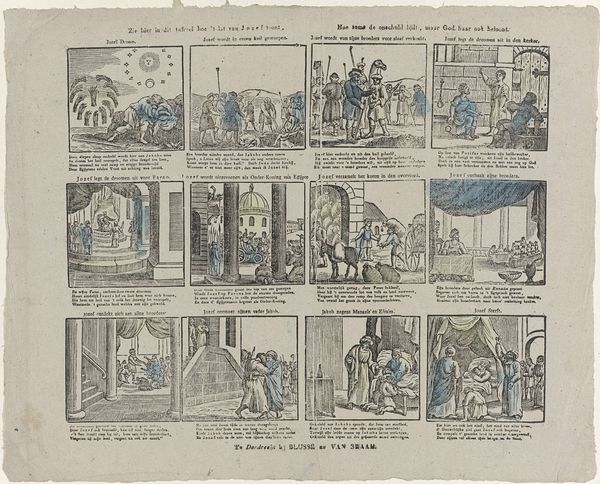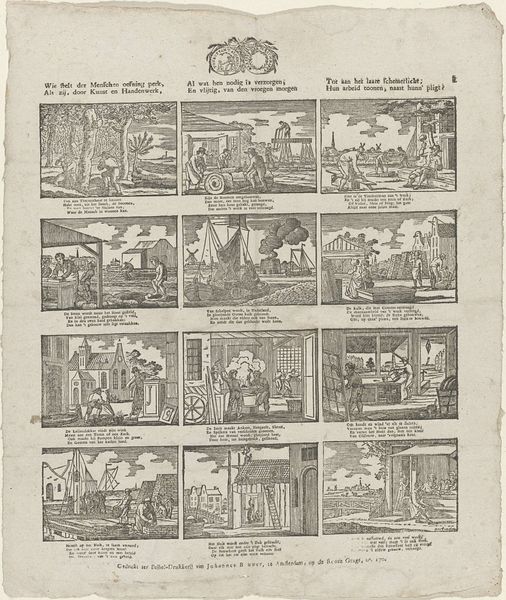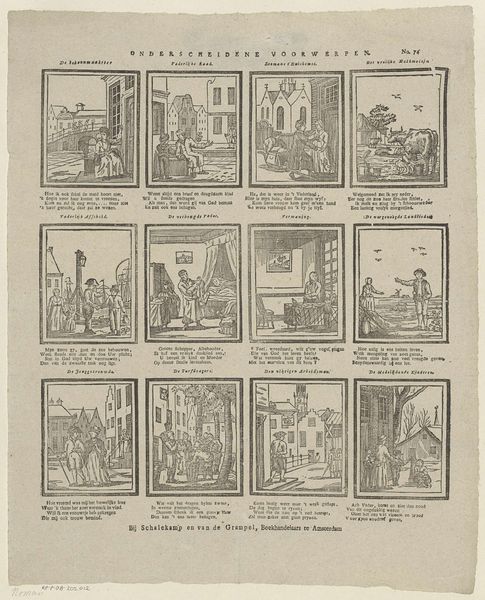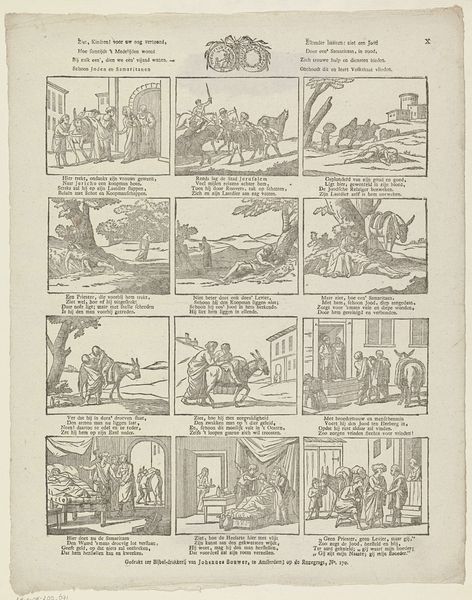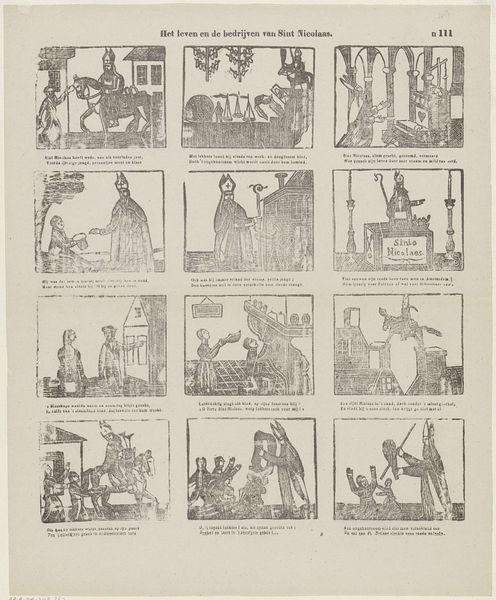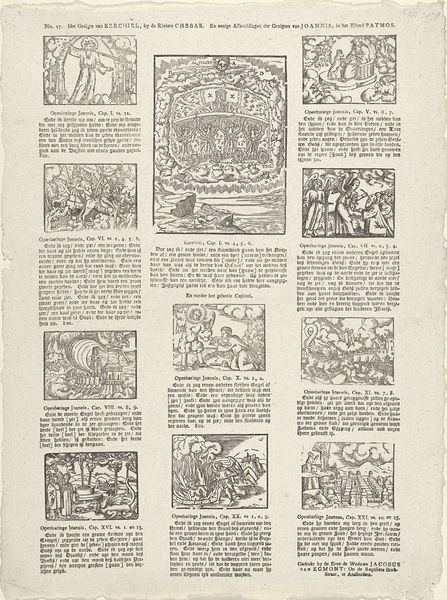
Zie hier in dit tafreel hoe 't lot van Jozef toont, / Hoe soms de onschuld lijdt, maar God haar ook betoont 1819 - 1840
0:00
0:00
print, engraving
#
comic strip sketch
#
narrative-art
# print
#
pen sketch
#
old engraving style
#
personal sketchbook
#
sketchwork
#
folk-art
#
pen-ink sketch
#
pen work
#
sketchbook drawing
#
genre-painting
#
history-painting
#
storyboard and sketchbook work
#
sketchbook art
#
engraving
Dimensions: height 338 mm, width 426 mm
Copyright: Rijks Museum: Open Domain
This print by Alexander Cranendoncq, made with etching around the 19th century, presents the story of Joseph in a series of small, framed scenes. The overall visual impression is one of ordered narrative, as the story unfolds across a grid-like structure. Cranendoncq uses line to define form and space, creating a sense of depth. The use of light and shadow, though minimal, directs the viewer's eye and adds drama to key moments, such as Joseph interpreting dreams or being sold into slavery. The composition emphasizes spatial relationships, using architectural elements and groupings of figures to convey the narrative’s progression. The structured layout reflects a cultural desire to categorize and understand complex stories through a logical, accessible format. This approach mirrors broader intellectual trends of the time, where knowledge was increasingly organized and disseminated through print. It invites us to consider how stories are not just told, but constructed and interpreted.
Comments
No comments
Be the first to comment and join the conversation on the ultimate creative platform.

